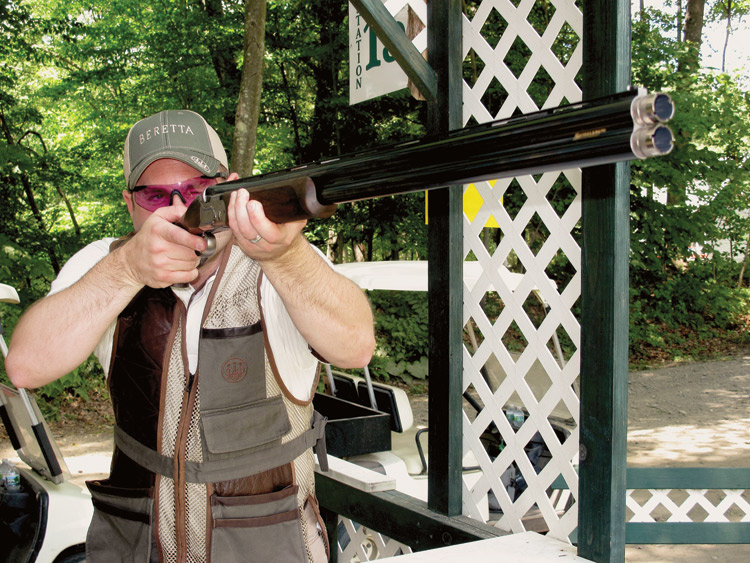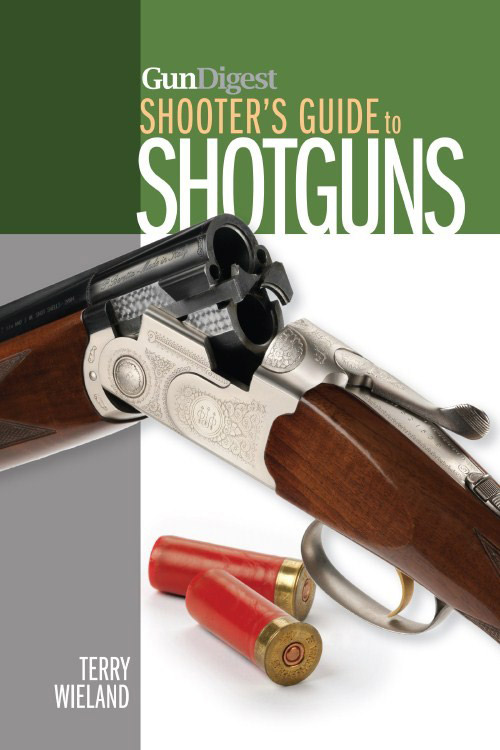

Federal statute tortuously defines a shotgun as “a weapon designed or redesigned, made or remade, and intended to be fired from the shoulder, and designed or redesigned and made or remade to use the energy of the explosive in a fixed shotgun shell to fire through a smooth bore either a number of ball shot or a single projectile for each single pull of the trigger.”
Oh. As with pornography, though, every shooter knows what a shotgun is when he sees it, based on its most distinguishing feature, its large, thin-walled, unrifled barrel.
So which is the shotgun of choice?
Double-Gun Delight
If we start with the double gun, we find that the days of the moderately priced, new in the box, American side-by-side (SxS) have long waned. A few years ago, Sturm & Ruger tried to bring out a SxS but ultimately had to abandon the project.
I believe the only easily affordable American-brand SxSs–and probably the only current American SxSs, period–are the Stoeger Uplander, which can be picked up for under $500, and the Mossberg International Silver Reserve II, around $1,000. Beyond that, continental-made SxSs, not to mention English best guns, generally start at mid-four-figure prices, and those for mere boxlocks; move to sidelocks and you will move the decimal point at least one-place to the right.
Wood and engraving certainly contribute to the high cost of good shotguns, but there really isn’t a cheap way of making a truly decent SxS. Besides the expense of building locks and ejectors, one of the major factors that goes into the price of a SxS is regulating the barrels to shoot to the same place.
A quick comparison of the boxlock to the sidelock, by the way, shows that as the names imply, the locks, or firing mechanisms, are on the sides or in the action body itself.
Sidelocks are the Swiss watches of locks, their parts in best guns often hand polished to ridiculous degrees. Boxlocks rarely receive such lavish attention and yet perform admirably, although the sidelock is easier to detach for cleaning and repairing.
Over-and-unders (O/Us) can start at between $600 to a $1,000; and Stoeger and Mossberg are, again, the places to look for American brands in this easily affordable price range. Beyond that, prices for good-quality O/Us rise rather gradually.
Competitive target shooters use O/Us exclusively, except for those who wish to be intentionally eccentric. And unlike SxSs, a pistol grip on an O/U is not, necessarily, an unspeakable practice, as it tends to control the muzzle jump in comparison to the SxS.
The Pump Action
Mention pump shotguns, and the attention turns automatically to the fabled Winchester Model 12, the so-called “perfect repeater.” Introduced by Winchester in 1912 in the post-Browning era, the gun was touted to require the finest materials and manufacturing techniques, which ultimately translated into its mass-production doom.

The value of the pump is its repeating ability and larger cartridge capacity over break-actions. With an extension tube, a tactical pump gun can carry upward of eight rounds in the magazine, a hunting gun six.
With a pump, a shooter points more directly at the target with his forehand as he works the slide, and so pulls down on it more naturally. Two other recommendations for the pump are its affordability, the Remington 870 starting at $400 retail, and reliability.
Another selling point for the pump is home defense. It is generally less expensive than a handgun, more accurate to point and creates a larger spray of projectiles.
Semi-Auto Seduction
The semi-auto shotgun is operated by two different systems: gas or recoil.
With a recoil action the force of the fired cartridge pushes back against the mass of the shooter and drives open the action, ejects the spent hull, loads another round, and recocks the gun. This is the action Browning used in his A-5, called in his case a “long recoil” action.
The other, more modern self-loading action is the gas-operated model. This action uses the gases of the cartridge’s ignition to operate, usually, a piston and produce the cycle of ejection, reloading and cocking.

So, which to choose?
In general, the recoil-operated actions recoil more but are easier to maintain. While gas-operate models are, normally, softer shooting but need more attention to cleaning to avoid fouling and jamming.
Well looked after, the gas gun ought to be as reliable in the field as any recoil-operated one, and should be better at absorbing the intense recoil of magnum loads such as those used for waterfowl.
Match the Action to Your Action
As a final rule of thumb, and pure opinion, pick an O/U for target and competitive shooting, and as a reliable upland gun. A pump is excellent for an all-around “beater,” to use an abusive term. A pump will also pull duty as a waterfowl gun in the harshest conditions, but there is little that will stop modern semi-autos, which will also soften the impact of 3- and 3½-inch loads on the hunter. And if you want the height of shotgun elegance and delight in shooting, buy the best SxS you can afford. You won’t regret the decision.
This article appeared in the April 8, 2013 issue of Gun Digest the Magazine.
Recommended Shotgun Resources
 Gun Digest Shooter's Guide to Shotguns
Gun Digest Shooter's Guide to Shotguns
Gun Digest Book of Shotgunning
Gun Digest Book of the Remington 870

![Best Concealed Carry Guns In 2025 [Field Tested] Wilson Combat EDC X9S 1](https://gundigest.com/wp-content/uploads/Wilson-Combat-EDC-X9S-1-324x160.jpg)


![Best 9mm Carbine: Affordable PCCs [Tested] Ruger Carbine Shooting](https://gundigest.com/wp-content/uploads/Ruger-Carbine-Shooting-100x70.jpg)
![Best AR-15: Top Options Available Today [Field Tested] Harrington and Richardson PSA XM177E2 feature](https://gundigest.com/wp-content/uploads/Harrington-and-Richardson-PSA-XM177E2-feature-100x70.jpg)

What do I do t fit rid of the dash board so I can reed the articles.
Good question Dendon2, it is aggravating to have that right column cover the last few words of each sentence. Hope someone is reading these comments, it is no fun to read these articles when you can’t see those words that end the sentences.